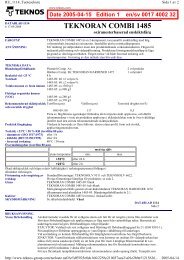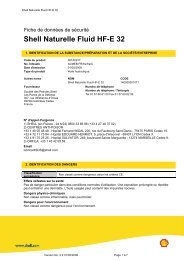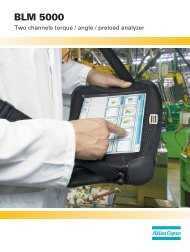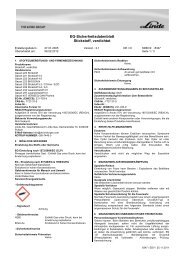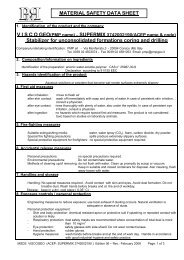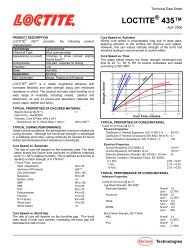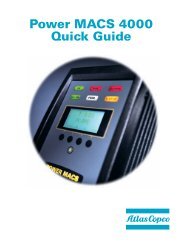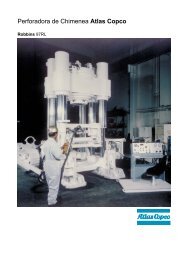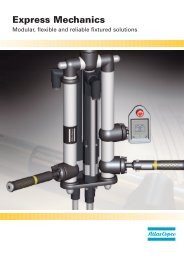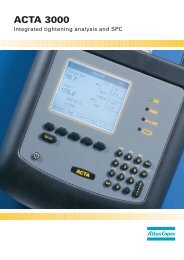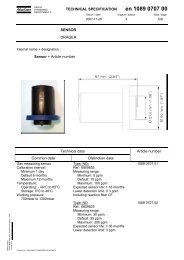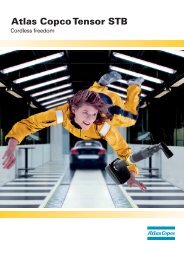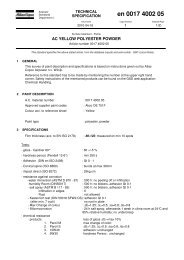Ergonomics - Atlas Copco
Ergonomics - Atlas Copco
Ergonomics - Atlas Copco
Create successful ePaper yourself
Turn your PDF publications into a flip-book with our unique Google optimized e-Paper software.
Normal use of grinders does not involve<br />
fast movements. Frequency is less than 6<br />
times per minute and duration more than<br />
10 seconds per operation.<br />
Total duration can vary a great deal.<br />
Try to find the real total duration for the<br />
workplace in question. If that is not possible<br />
use the values in Table 3.10.<br />
Drills<br />
The important forces<br />
are force and torque from the feed<br />
force, the torque from the drill opera-<br />
tion and the trigger force.<br />
For pistol grip drills feed force is hori-<br />
zontal or vertical push force. A torque is<br />
generated equal to the distance from the<br />
main axes of the tool to the center of the<br />
hand, multiplied by the feed force used.<br />
This torque is an ulnar-flexion torque.<br />
The torque from the drilling operation<br />
is a supination torque. The maximal torque<br />
can be calculated when the power of the tool<br />
is known. Assuming the maximum power<br />
is when the tool is loaded down to half the<br />
free-running speed, the maximum power<br />
torque can be calculated as:<br />
Max. power torque =<br />
Max. power 10 / free-running speed<br />
Pistol grip tools normally have a trig-<br />
ger operated with the index or long finger,<br />
depending on the grip chosen. For straight<br />
tools the maximal feed force is the stand-<br />
ing or sitting push-down or push-forward<br />
force depending on the workstation design.<br />
Torque in the wrist to counteract the torque<br />
from the drilling acts as a dorsal-flexion<br />
torque. In some cases, where the handle has<br />
low friction the gripping force can be the<br />
limiting force.<br />
For angle drills, when operated with one<br />
hand, the feed force results in an ulnar-flex-<br />
ion torque. Torque is calculated as the feed<br />
force needed multiplied by the distance from<br />
the drill bit to the center of the hand.<br />
Normal use of drills does not involve<br />
fast movements. Frequency is less than 6<br />
times per minute and duration more than<br />
10 seconds per operation.<br />
Total duration can vary considerably. Try<br />
to find the real total duration for the work-<br />
place being analysed. Use the number of<br />
holes drilled multiplied by the duration, i.e.,<br />
the time taken to drill one hole. If that is not<br />
possible use the values given in Table 3.10.<br />
Percussive tools<br />
The important forces<br />
are the feed force, and the trigger force.<br />
Feed force for chipping hammers acts as a<br />
standing push down force. For riveting ham-<br />
mers it is a standing push forward force.<br />
83



